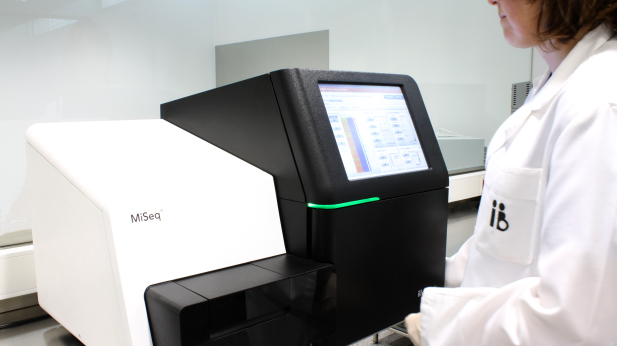Whole exome sequencing

How can we help you?
Non-obligation guidance
What is an exome?
The human genome is composed of between 20 and 25,000 genes. Genes contain information for synthesising all the proteins in our organism and this information is coded into a four-letter system (A, T, C and G). It is not present in continuous format in the genes; the coded regions (exons) are staggered in between regions that do not contain protein synthesis information (introns). The set of exons in our genome is known as the exome.
What is exome sequencing?
If there is a modification in genetic information (mutation), the proteins that are synthesised are not fully active. In other words, they cannot perform their function properly and they cause illnesses.
There are two types of mutations. For example, a change in a single letter in a DNA sequence can cause a modification in the protein composition and this can decrease its activity. In other cases, the mutations are a bit more complex. For example, letter insertions or an absence of letters.
Exome sequencing consists of using a four-letter code to determine the composition of all the exons in a given patient. When this sequence is compared with a sequence that does not present any abnormalities, it is possible to identify the mutation that is responsible for a genetic disorder.
When is exome sequencing necessary?
We know which gene causes most illnesses. That is, the gene that causes an illness if it mutates. Sequencing that gene helps us to identify the mutation or change in the genetic code that is responsible for an illness. An exome is not necessary in these cases.
Exome sequencing can be useful in cases of complex illnesses where multiple genes can cause an illness. It can also be incredibly useful for identifying mutations in illnesses that have not previously been studied in detail. In these cases, studying and comparing the parents’ exome with the patient’s exome can help to identify the mutation that is responsible for the illness.
Types of exome genetic analyses
Based on an analysis of a given patient's clinical data, one of two different exome sequencing strategies can be proposed.
- Clinical targeted exome sequencing. In this case, the analysis is limited to genes that we know can explain the patient's symptoms.
- Clinical whole exome sequencing. In other cases, since there is no clear definition of the genes that need to be analysed, the analysis is performed on the whole exome without ruling out any genes.
Both strategies are perfectly acceptable and geneticists must evaluate the circumstances and recommend the best means of analysing the exome.
How is exon sequencing performed?
Progress in DNA sequencing technology means that it is now possible to sequence exomes. Specifically, next generation sequencing technology has facilitated human exome sequencing.
Instituto Bernabeu has a molecular biology and genetics department equipped with the very latest technology. As such, we are able to perform both clinical whole exome sequencing and clinical targeted exome sequencing at our facilities.
Differences between exome and genome sequencing
In exome sequencing, we obtain the sequence of all the exons in a four-letter code format. In other words, only the regions that contain genetic information and where the majority of mutations are located.
In genome sequencing, other less relevant regions are analysed, too. We are less likely to find genetic mutations in these regions. In some very special cases, it is necessary to analyse a patient’s entire genome.